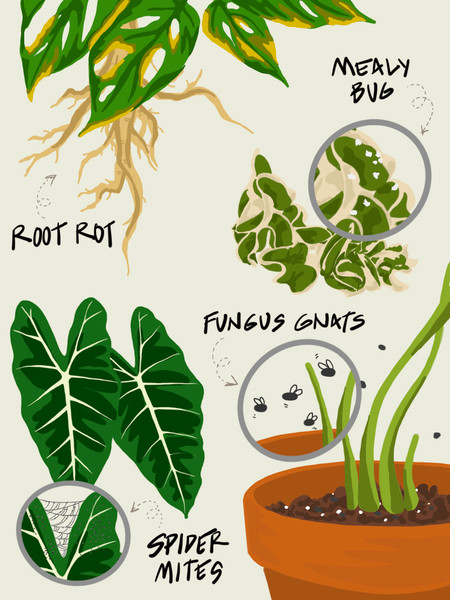Common Houseplant Problems and Solutions
Posted by Megan Nichols on Oct 23rd 2020
We love our houseplants, and we only want to see them happy. But, every once and awhile, they send out a distress signal that something is not quite right, and it’s our job to figure out what’s wrong and how to make it better.
Certain issues can affect a variety of plants, but one plant we hear about often and that has its own, unique issues, is the Fiddle Leaf Fig, so we’ll start there.
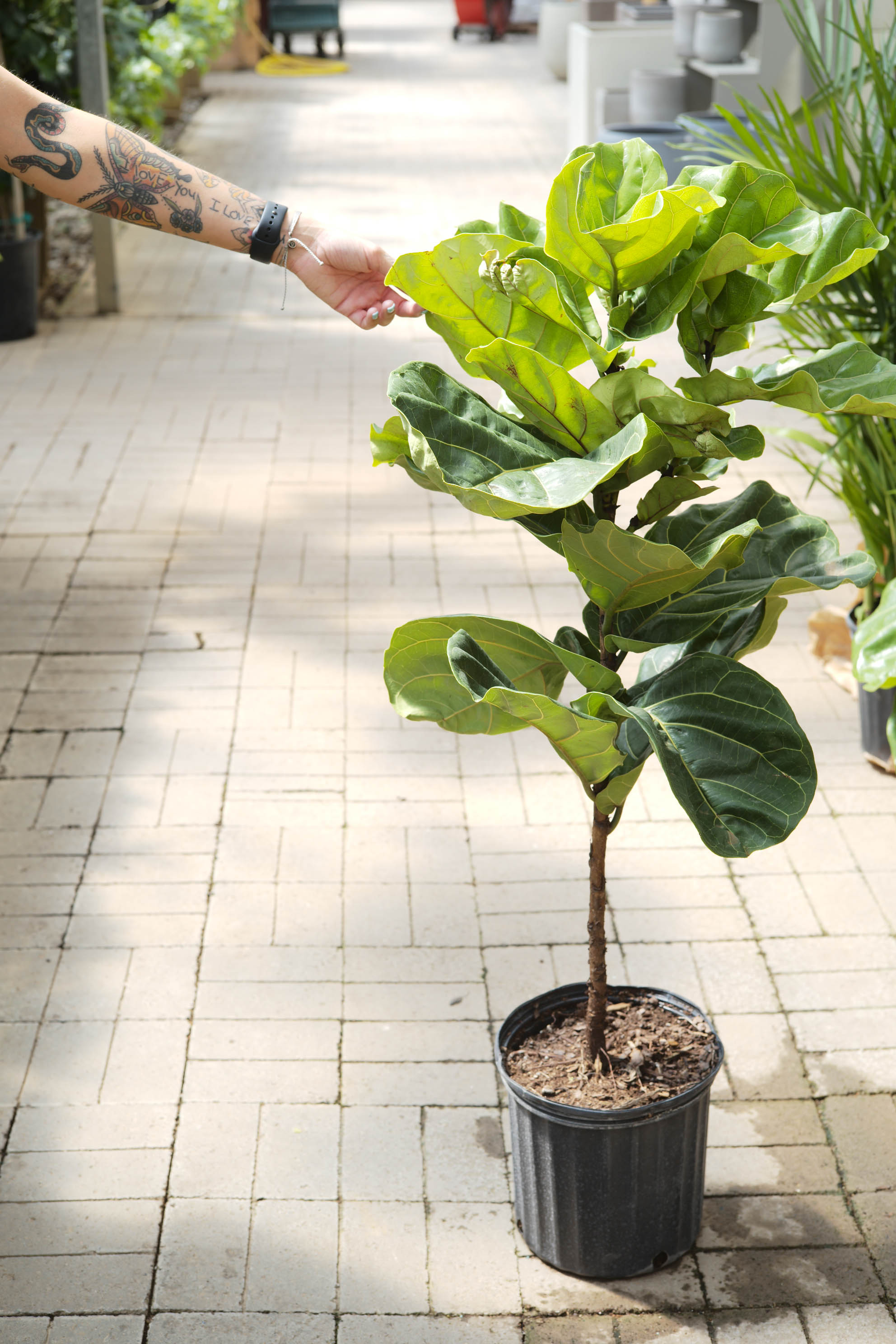
Fiddle Leaf Fig
Brown spots on the leaves of Fiddleleaf Fig plants are an unfortunate and common problem. There are a couple possible culprits and different ways to treat the spots, depending on the source. Here’s how to identify the issue and what to do about it.
Root Rot

Root Rot is a fungal infection caused by a plant's roots sitting in water for an extended amount of time. A Fig with root rot may display little to large brown spots on the leaves, usually showing first on lower leaves, which will then begin to drop.
To determine if root rot is the culprit, remove the plant from its container and examine the roots. If the roots are brown an mushy, then the damage is from root rot. Cut back on watering for a couple weeks, move the plant into brighter light (be sure the light is still indirect, but brighter than the previous location) and remove the infected leaves. With time, the plant will likely recover. If the plant is suffering severely you may need to cut off all infected roots and repot the plant in new soil.
Bacterial Infection
If the leaves are yellow and have brown spots, and especially if it’s more severe on younger leaves, it’s likely bacterial infection. This condition can be harder to treat, but if it’s not too severe it may be possible. Cut off infected leaves, repot the fig with new soil, water in but then go easy on watering, and make sure it’s getting plenty of light.
Wilting
Most often, wilting happens when a plant is in need of water. Water is taken up by the roots, travels through the plants vascular system, and fills plant cells, causing them to swell and become turgid; helping the plant maintain structure and stay upright.
It can be confusing, but a plant can also wilt due to too much water. Before watering, determine if the plant actually needs it by inspecting the moisture level of the soil (stick your finger in the soil, if it’s damp all the way through the plant doesn’t need to be watered). Check the saucer, as well, if there is one. If there is standing water in it and you didn’t just finish watering, dump it out and let the plant dry down a bit.
Yellowing leaves
This common problem can be caused by a variety of things, which means some trouble shooting may be in order when determining the source of the problem and how to resolve the issue.
Normal aging is one of the main causes of yellowing leaves. Leaves often don’t last forever, they age and senese over time. Additionally, leaves that are deep inside the interior of a plant structure and receive less light are more likely to yellow and fall. Just remove these leaves as time goes on and they present themselves. If the plant seems healthy overall its probably just fine and just growing up.
Lacking nutrients. This can cause yellowing leaves in some plants. Depending on the plant, it may need a basic fertilizer, or it may be lacking iron, which often causes yellowing in leaves of plants that require a high iron diet.
Not enough light. A plants leaves may begin to yellow and drop if it’s had too little light from the sun for photosynthesis (making its own energy).
It’s chilly. If plants are exposed to cool drafts their leaves may yellow and drop. Many houseplants come from tropical regions and they don’t like to get too cold. Keep plants away from air conditioning units in summer and drafty doors and windows in winter.
White spots on leaves
If you see flat, slightly fuzzy spots on the leaves and even stems of your plant, there’s a good chance its powdery mildew. The spots that are already there won’t go away, but the spread can be stopped by treating the plant with a fungicide.
Pests
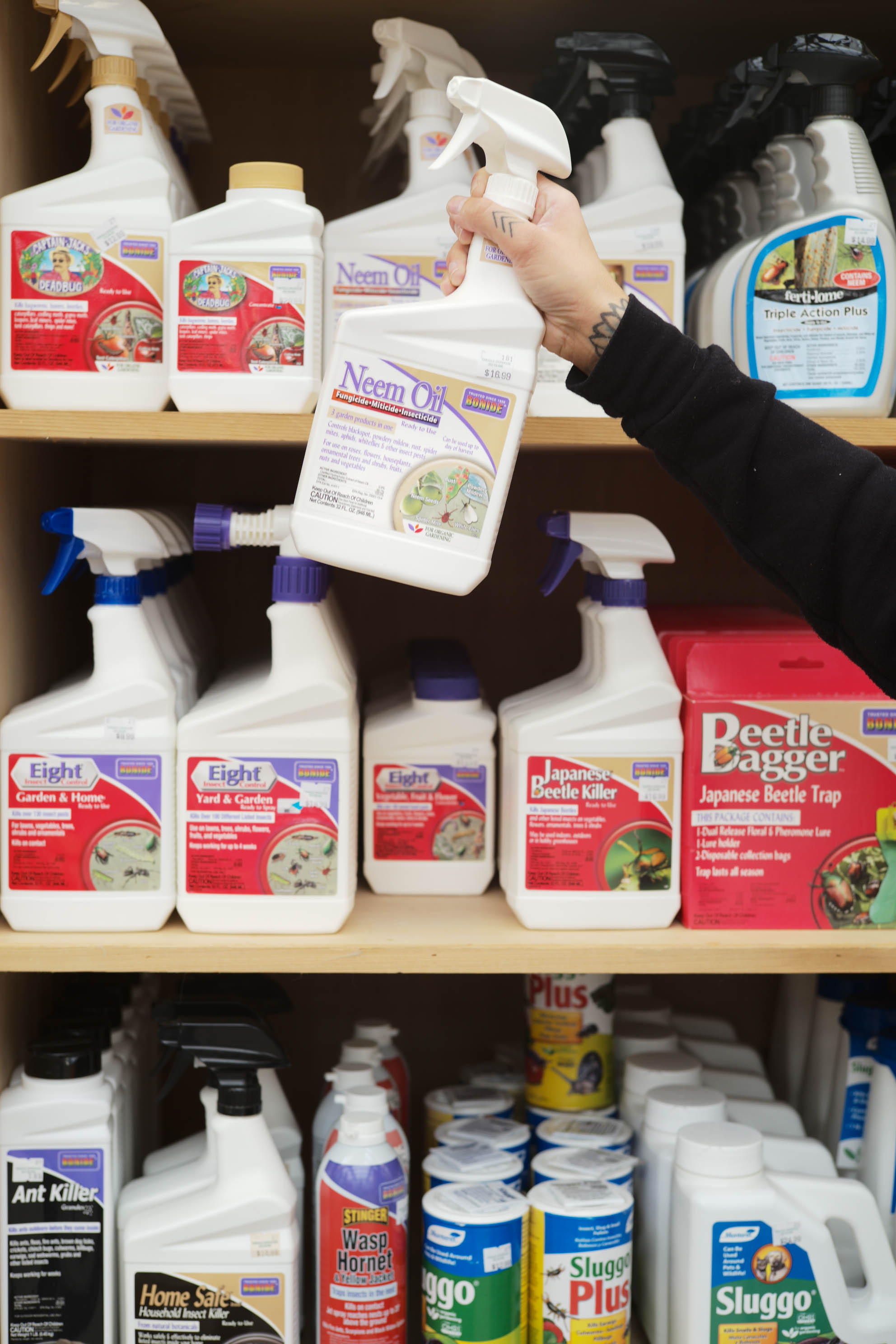
Aside from environmental or disease issues, plants can also suffer from pest infestations. As with other plant health problems, pests cause plants to become stressed, and the plants can show a variety of stress signals.
Once you’ve noticed damage and a pest, here are the basic steps to successfully treating your plant:
- 1.Identify the pest.
- 2.Use a hard water spray to knock off as many as possible.
- 3.Treat the plant with a product that is designed to kill the identified pest.
Mealy Bugs
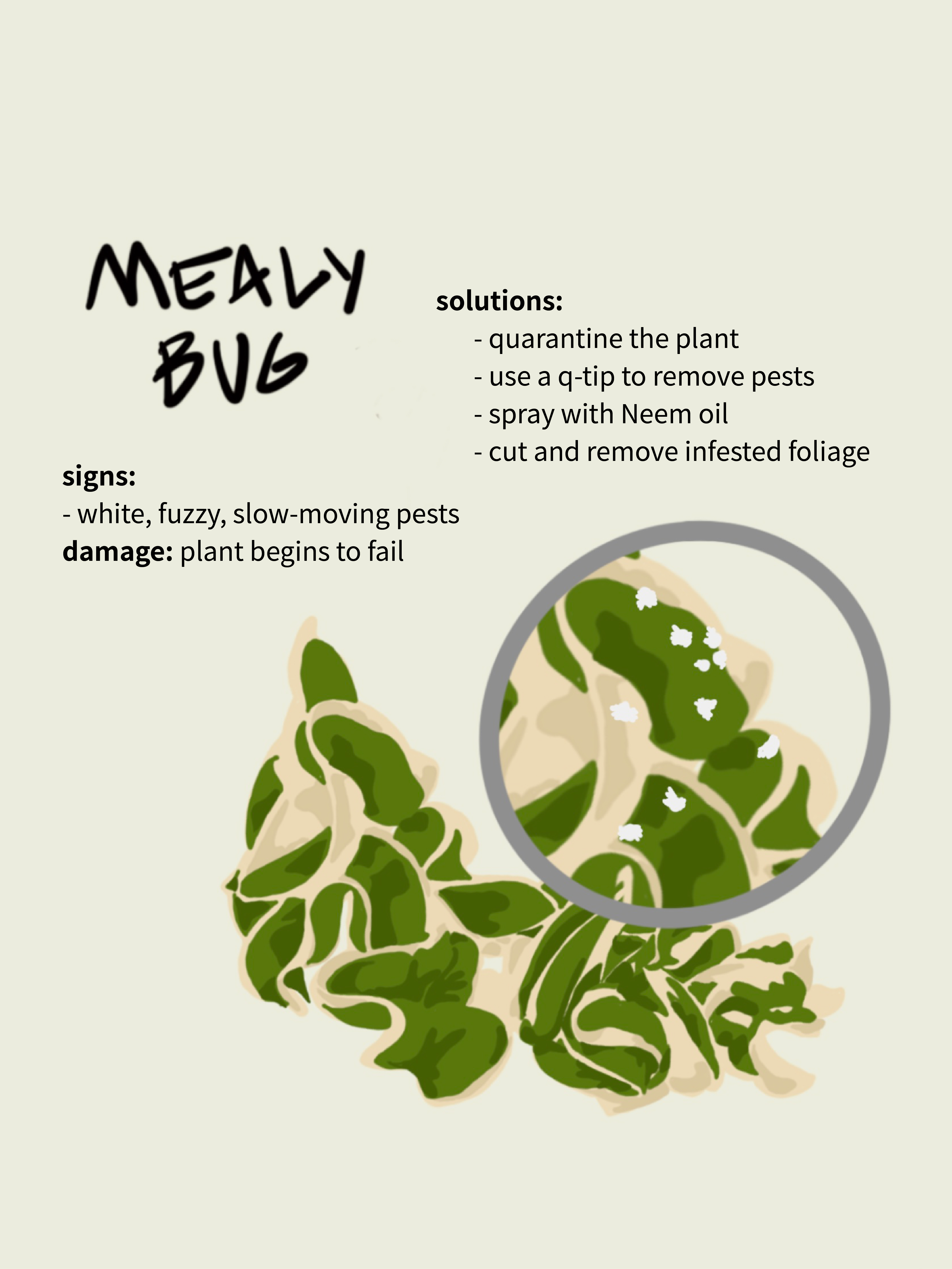
Mealy bugs are slow moving, fuzzy, white insects that look like they’re covered in little puffs of cotton ball. They damage plants by sucking out the plants juices, especially favoring tender, new growth. The leaves and plant parts will yellow and fall off in time. Use Insecticidal soap, Neem Oil, Captain Jacks Dead Bug, or Bonide’s Eight to kill Mealy bugs. If the infestation is small, you can also dip a q-tip in rubbing alcohol and dab it onto the insect.
Aphids
These nasty creatures come in a variety of colors (green, orange, white, black) and can wreak havoc on plants. They pierce plant leaves with their sharp mouths and extract phloem. This can cause leaf puckering and discoloration, and essentially robs the plant of energy and nutrients. Aphids also leave behind a sticky residue called honeydew. This residue attracts ants, which are mostly a nuisance, but it also creates sooty mold, which covers plant parts and makes it impossible for the plant to photosynthesize.
Luckily, they are easy to get rid of, though it may take a few tries. Once aphids have been identified, spray all plant parts with Eight, Captain Jack’s, or Insecticidal Soap.
Fungus gnats
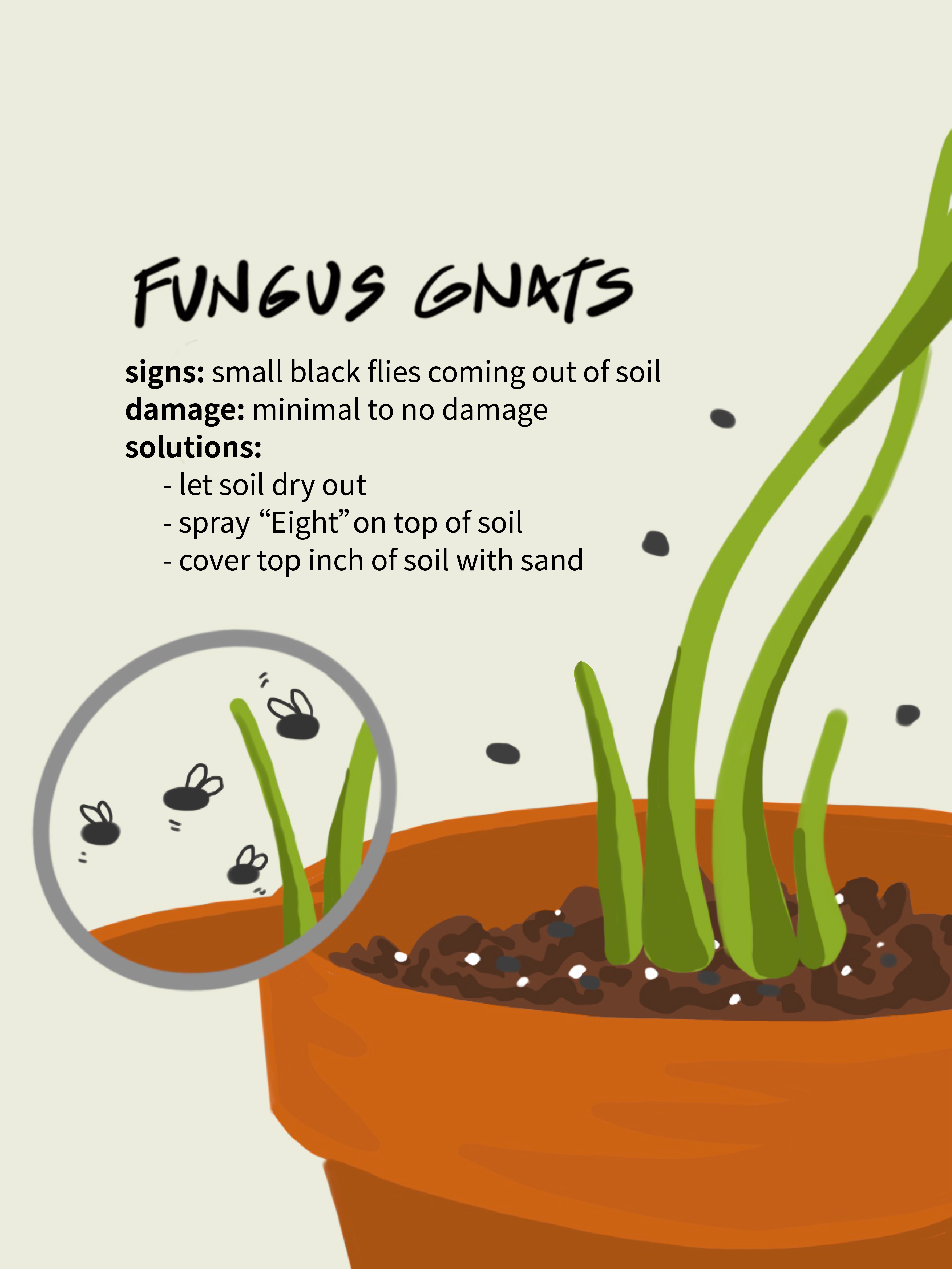
Unlike other pests, these actually are not much of a concern for a plants health, they’re really more of an annoyance. Fungus gnats lay eggs in damp soil, and the newly hatched larvae feed on plant roots. The population would have to be unbelievably high for them to do enough feeding on the roots to cause harm. But, the fruit fly-like adults are irritating – nobody wants tiny black flies cruising around their home!
Let the soil dry down a bit. This will kill off any larvae and make it impossible for the insects to enter or exit the soil surface.
Scale
This particularly nasty pest is difficult to get rid of, but it can be done. Scale is found in groups, and usually on older plant parts, so it’s fairly easy to identify. It looks like raised bumps and doesn’t move around, so it can be mistaken for a fungus or disease, or even part of the plant.
Spray scale with horticultural oil. They breath through their hard shell, and the oil coats the openings, causing suffocation. After about a week, wipe the scale off the plant with a damp paper towel. If some don’t wipe off they are still alive and should be sprayed again.
Houseplant parenting isn’t always an easy task, but these green babies sure are worth the extra effort and attention for all they reward us with! Happy houseplant healing!

